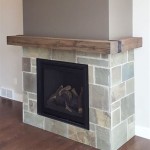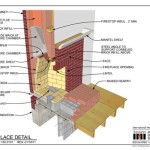Understanding Wood Burning Fireplace Chimney Pipe
A wood burning fireplace offers a comforting and aesthetically pleasing heat source, particularly during colder months. However, the safe and efficient operation of a wood burning fireplace hinges critically on the chimney system, and more specifically, the chimney pipe. This article explores the essential aspects of wood burning fireplace chimney pipe, including its function, types, installation considerations, maintenance requirements, and potential safety concerns.
The Critical Function of the Chimney Pipe
The chimney pipe serves as the primary conduit for expelling combustion byproducts from the fireplace to the outside atmosphere. These byproducts include smoke, hot gases, creosote, and carbon monoxide. A properly functioning chimney pipe ensures these substances are vented safely and efficiently, preventing them from entering the living space and posing health and safety risks.
The chimney creates draft. Draft is essential for proper combustion and efficient venting. The heated air and gases within the chimney pipe, being less dense than the cooler ambient air outside, rise, creating a pressure differential that pulls air into the fireplace and expels the exhaust upwards. This draft helps sustain the fire and prevents smoke from backdrafting into the home.
The chimney pipe also protects the surrounding structure from the intense heat generated by the fire. Without adequate insulation and fire-resistant materials, the high temperatures of the exhaust gases could ignite nearby combustible materials, leading to a house fire. A well-designed and properly installed chimney pipe acts as a barrier, minimizing the risk of heat transfer to the building's framing and other susceptible elements.
Types of Chimney Pipe for Wood Burning Fireplaces
Several types of chimney pipe are available for wood burning fireplaces, each with its own characteristics, advantages, and disadvantages. Single-wall, double-wall, and triple-wall pipes are the most prevalent options. The choice of chimney pipe will depend on factors such as the fireplace type, building codes, and budget considerations.
Single-wall chimney pipe is typically constructed from black steel or stainless steel. It is the least expensive option but offers minimal insulation and heat protection. Single-wall pipe is generally suitable for connecting a wood stove or fireplace insert to an existing masonry chimney but is not recommended for use as a freestanding chimney system due to its high surface temperatures and increased risk of fire.
Double-wall chimney pipe features two layers of metal with an air space or insulation material in between. This design significantly improves insulation and reduces surface temperatures compared to single-wall pipe. Double-wall pipe is a more versatile option, suitable for both connecting to existing chimneys and for creating freestanding chimney systems. It is typically used indoors, transitioning to a triple-wall pipe as it passes through a ceiling or wall.
Triple-wall chimney pipe offers the highest level of insulation and fire protection. It consists of three layers of metal with two air spaces or insulation layers. This type of pipe is specifically designed for exterior use and is required when the chimney passes through combustible materials such as walls or roofs. Triple-wall pipe is more expensive than single-wall or double-wall pipe but provides the greatest degree of safety and performance.
Installation Considerations and Best Practices
Proper installation of the chimney pipe is paramount for the safe and efficient operation of the wood burning fireplace. It is strongly recommended that installation be performed by a qualified and certified professional. Incorrect installation can lead to various problems, including draft issues, creosote buildup, and fire hazards.
Building codes dictate specific requirements for chimney pipe installation, including clearances to combustible materials, minimum chimney height, and proper support and connections. These codes are designed to ensure the safety of the occupants and the surrounding structure. It is crucial to consult local building codes and obtain the necessary permits before beginning any chimney installation project.
The chimney pipe should be installed with a positive slope, meaning that it rises continuously from the appliance to the chimney termination. This slope allows for proper draft and facilitates the flow of exhaust gases. Any horizontal sections of the chimney should be kept as short as possible to minimize the risk of creosote buildup and draft problems.
Properly sealing the connections between chimney pipe sections is essential to prevent leaks of smoke and carbon monoxide. Use the appropriate sealant or gasket recommended by the chimney pipe manufacturer. Regular inspections of the connections should be performed to ensure they remain tight and leak-free.
The chimney termination, the part of the chimney that extends above the roof, should be positioned in accordance with building codes to ensure adequate draft and prevent downdrafts. The height of the chimney termination should be sufficient to clear nearby obstructions, such as trees or buildings. A chimney cap should be installed to prevent rain, snow, and debris from entering the chimney.
Maintenance and Inspection Procedures
Regular maintenance and inspection of the chimney pipe are crucial for preventing problems and ensuring the safe operation of the wood burning fireplace. Creosote buildup is a major concern, as it is highly flammable and can lead to chimney fires. Regular cleaning by a qualified chimney sweep is essential to remove creosote deposits.
The frequency of chimney cleaning depends on factors such as the type of wood burned, the frequency of fireplace use, and the efficiency of the appliance. As a general guideline, the chimney should be inspected at least once a year and cleaned as needed. If there are signs of excessive creosote buildup, such as thick, black, or shiny deposits, more frequent cleaning may be required.
In addition to creosote removal, regular inspections should also check for any signs of damage or deterioration to the chimney pipe. Look for cracks, rust, corrosion, or loose connections. Any damaged or worn components should be replaced promptly to prevent further problems.
During inspections, pay attention to the condition of the chimney cap. Ensure it is securely attached and free from obstructions. Clean out any debris, such as leaves, twigs, or animal nests, that may have accumulated in the cap. A blocked chimney cap can restrict airflow and lead to draft problems.
The area around the fireplace and chimney should also be kept clear of combustible materials. Maintain a safe distance between the fireplace and any flammable items, such as curtains, furniture, or firewood. This precaution helps to prevent accidental fires.
Safety Concerns and Mitigation Strategies
Wood burning fireplaces pose several potential safety concerns, including chimney fires, carbon monoxide poisoning, and smoke inhalation. Understanding these risks and implementing appropriate mitigation strategies is vital for ensuring the safety of the occupants.
Chimney fires occur when creosote deposits in the chimney ignite. These fires can be extremely dangerous, as they can spread rapidly and cause extensive damage to the home. Regular chimney cleaning is the most effective way to prevent chimney fires. Other preventive measures include burning seasoned wood, avoiding smoldering fires, and maintaining proper airflow in the fireplace.
Carbon monoxide is a colorless, odorless gas that is produced during combustion. It is highly toxic and can be fatal if inhaled in sufficient quantities. A properly functioning chimney helps to vent carbon monoxide safely to the outside. Install carbon monoxide detectors in the home, particularly near sleeping areas, to provide early warning of elevated carbon monoxide levels. Change the batteries regularly and test the detectors periodically to ensure they are working properly.
Smoke inhalation can also be a health hazard, especially for individuals with respiratory problems. Ensure adequate ventilation in the room where the fireplace is located. Open a window slightly to provide fresh air and improve draft. If you experience any symptoms of smoke inhalation, such as coughing, wheezing, or shortness of breath, seek medical attention immediately.
Never use flammable liquids, such as gasoline or kerosene, to start a fire in the fireplace. These liquids can ignite explosively and cause serious injuries. Use only approved fire starters or kindling to ignite the fire.
Always supervise children and pets when the fireplace is in use. Teach children about fire safety and keep them away from the fireplace. Install a fireplace screen or guard to prevent accidental contact with the flames or hot surfaces.

Chimney And Venting Pipe Guide Fireplaces Direct Learning Center

Twin Wall Chimney Flexible Flue Liner Stove Pipe

Chimney Installations

Wood Stove Installation Chimney

Can You Install A Wood Stove In Fireplace Direct Stoves

Remora Flue Pipe Fan For Vitreous Stovefitter S Warehouse

The Temperatures For A Double Wall Chimney Pipe Ehow

Flue Pipe Chimney Greenstone Soapstone Masonry Heaters

How To Retrofit A Fireplace With Woodstove Small Farmer S Journalsmall Journal

Why Is It Important To Seal Chimney Pipes Panadero
Related Posts








